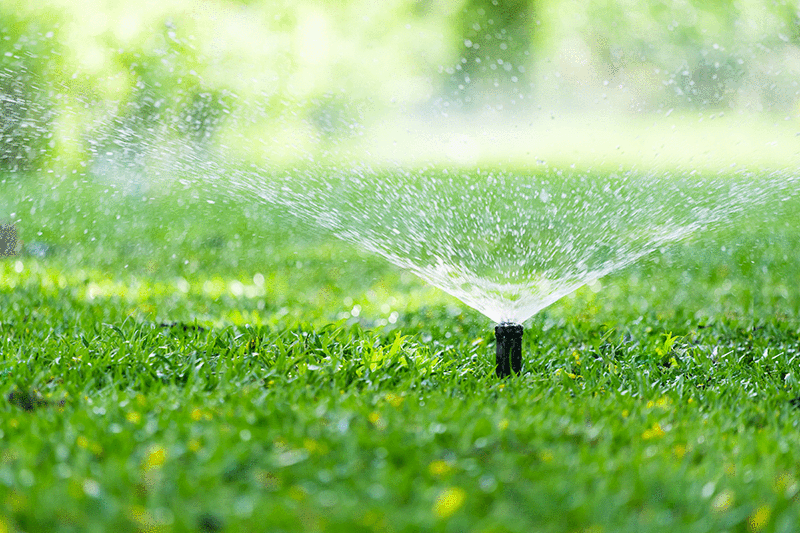Summer is the time of year when you want to be able to enjoy your lawn, whether you’re hosting games of catch with the kids, creating your own private picnic, or just admiring the beautiful green blanket of grass. Unfortunately, summer is also hard on Alabama lawns because of the season’s heat and occasional droughts.
For many homeowners, sprinklers are the key to keeping their lawns healthy and hydrated. If you’re setting up or fine-tuning your irrigation, our lawn care experts are here to guide you through the best sprinkler routine for your Alabama lawn.
The Best Times to Run Your Sprinkler
When you use sprinklers to water your lawn, the ideal time to run them is in the early morning before sunrise – generally between 4:00 am and 7:00 am. Temperatures are usually at their lowest during this time so you’ll lose less water to evaporation, and because wind speeds are low during this time, you’ll lose less water to drifting too. Grass is also less likely to develop fungi if you water it during this time because this is the time of day when dew usually forms.
How Often to Run Your Sprinkler
Your lawn doesn’t need to be watered daily, and in fact, that could be hurting more than it’s helping. Most lawns only need to be watered once or twice per week. In our Alabama climate, daily rain isn’t common, but watering your lawn daily will make it dependent on daily water. That makes it less drought-resistant so you have a finicky, less stable lawn.
How Long to Run Your Sprinkler
When you run your sprinkler, the goal is to give your water one to two inches of water per week in total. This is usually done by giving your lawn ½ to ¾ of an inch of water twice per week.
The time it takes to give that amount of water to your lawn will vary, though. The best way to set up your timed sprinkler system is to set out shallow containers on your lawn, like tuna cans, to see how long it takes for each zone of the lawn to get ½ to ¾ of an inch of water.
How to Know if Your Lawn Needs More or Less Water
Fine-tuning your sprinkler system comes down to a process of trial and error, so it’s important to be observant of your lawn to see if you might be overwatering or underwatering.
The top symptoms of an overwatered lawn include water runoff, a yellowing color, fungi growth, a spongy texture, and thatch growth. On the other hand, an under-watered lawn typically has a bluish-gray color, folded leaf blades, dry soil, and slow growth. If you’re not confident in your ability to spot these signs and adjust for them, you could also use a ground moisture sensor or hire a professional.
Setting Up Your Lawn for a Healthy Summer
Giving your lawn adequate water on a regular basis is an important part of growing and nurturing your lawn, but it’s not as simple as it may sound. There are many factors that impact your lawn irrigation, like the variety of grass you have, the amount of sun your lawn receives, the temperature and wind, your soil composition, and so on.
That’s why we’re here to help with your lawn care including weed control and fertilization. Reach out to Lawn Guard, your Alabama lawn care specialists today to give your lawn the benefit of a knowledgeable eye and a skilled hand this summer.


Recent Comments